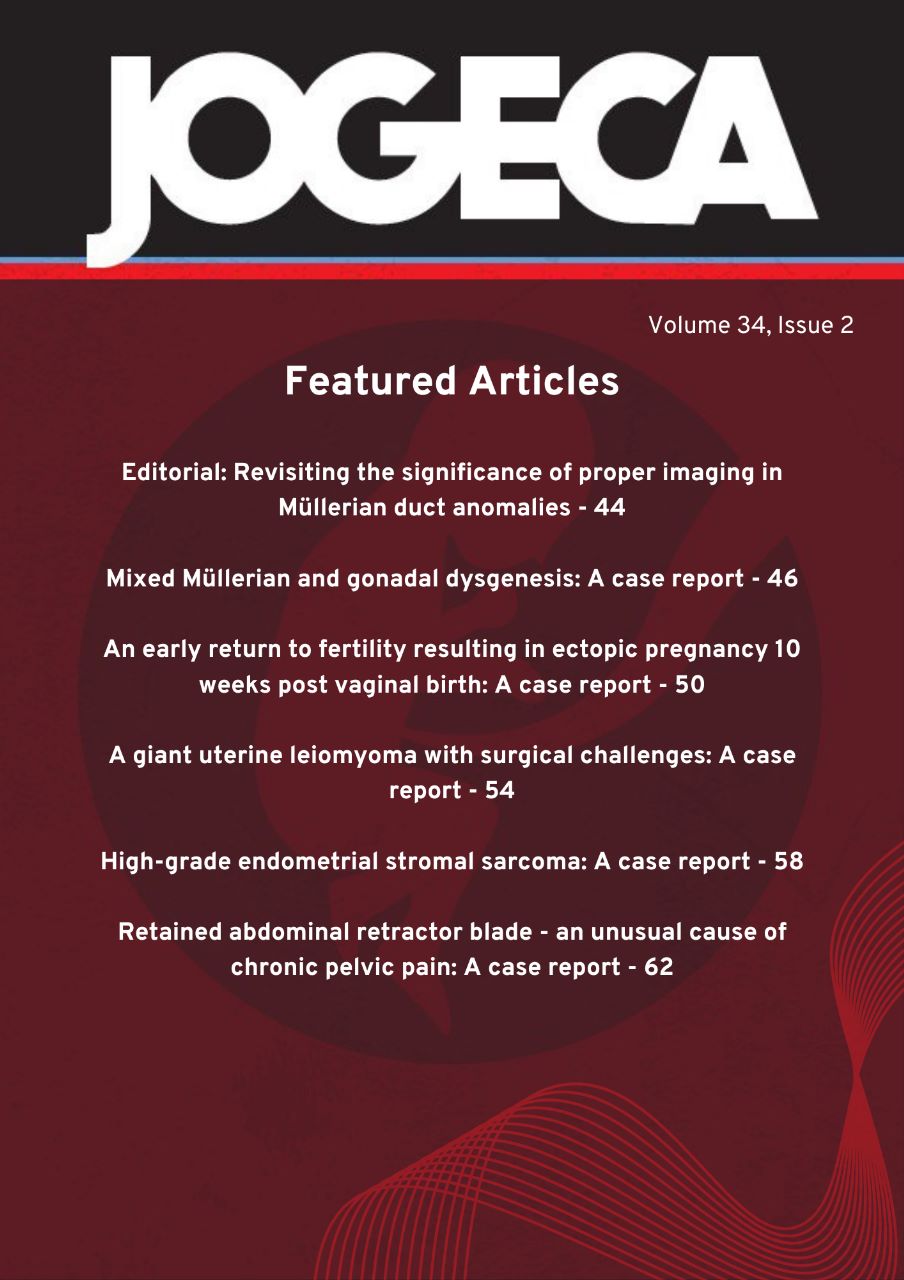VALIDATION OF A MODIFIED OBSTETRIC EARLY WARNING SYSTEM FOR PREDICTING SEVERE MATERNAL OUTCOME AT A TERTIARY REFERRAL FACILITY IN WESTERN KENYA
DOI:
https://doi.org/10.59692/jogeca.v36i1.115Abstract
Background: Maternal ‘near-miss’ and deaths, together termed severe maternal outcome(SMO) follow a pattern of deterioration that can be predicted and prevented. To prevent SMO, a Modified Early Obstetric Warning System (MOEWS) for tracking significant changes (‘triggers’) in vital signs among obstetric patients and initiating corrective measures is suggested.
Objective: To determine predictors of SMO and the validity of the MEOWS for predicting SMO at Moi Teaching and Referral Hospital (MTRH), Eldoret-Kenya
Methods: A retrospective cohort study was conducted at MTRH among 3200 mothers admitted from 1st January 2019. Maternal mortality and ‘near miss’ were determined by WHO criteria. Mothers were grouped into two outcome groups; either experiencing or not experiencing SMO. Their vital signs 24 hours prior to either outcome were then tabulated on a MOEWS chart and determined whether they met a vital sign trigger threshold. The sensitivity, specificity, positive predictive value(PPV) and negative predictive value(NPV) were determined. Relationship between sociodemographic and obstetric characteristic and SMO was determined by multivariate analysis
Results: The sociodemographic and obstetric predictors of SMO were age over 35 years(aOR=1.56), having a previous caesarean delivery(aOR=2.19), caesarean delivery in the index pregnancy(aOR=2.09), being a referral(aOR=3.43), not attending antenatal care (aOR=2.53) and admission in the preterm period(aOR=2.81) and in the postpartum period(aOR 51.3). The sensitivity of MOEWS was 77%, specificity 98%, PPV 61% and NPV 98%.
Conclusion: The MOEWS chart has a high specificity, sensitivity and NPV but low PPV. The MOEWS chart is a valuable tool for predicting SMO
Downloads
Published
How to Cite
Issue
Section
Categories
License
Copyright (c) 2024 The authors.

This work is licensed under a Creative Commons Attribution 4.0 International License.




